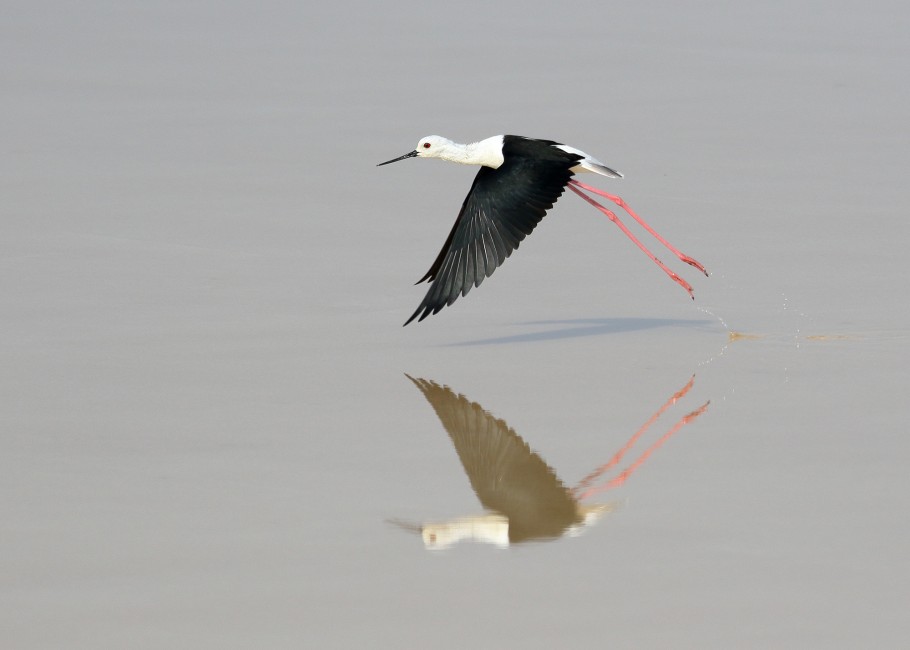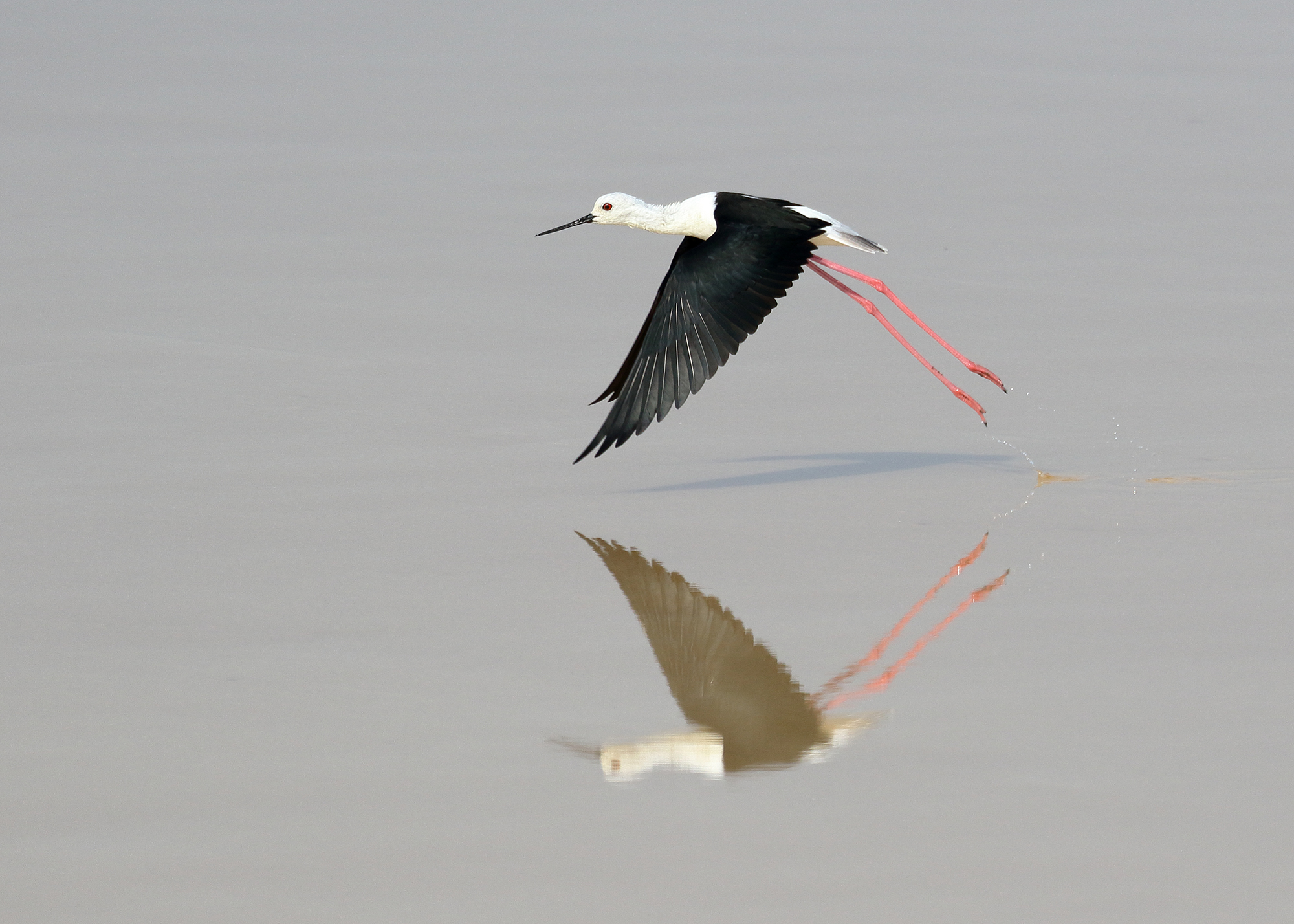
December 17, 2019
Salt Pans: A Sweet Spot for Conservation
- as seen by -
 Jonathan C. Slaght
@JonathanSlaght
Jonathan C. Slaght
@JonathanSlaght A black-winged stilt (Himantopus himantopus) takes flight from a salt pan in Pak Thale, Thailand. Salt pans–the sources of sea salt found in pantries around the world–are shallow, coastal pools of sea water. As the water evaporates, teams collect the layer of exposed salt.
Despite being human constructs, traditional salt pans have significant conservation value. As coastal habitat continues to shrink across Asia, the centuries-old practice of harvesting salt has offered stability to waterbirds such as this stilt. They forage for insects and crustaceans along coastal mudflats exposed during low tide, then retreat toward land when the waters return. Salt pans give these birds a safe place to roost and forage until the waters recede again: no terrestrial predators can slink to the middle of one without being noticed.
Traditional salt pans also offer excellent views of huge, wintering flocks of waterbirds, which in turn attract ecotourists. On any given day in Pak Thale between November and March, birds and people—some raking salt and others carrying spotting scopes—move past one another in the heat.
Recently, conservationists banded together to purchase a salt pan nearby–one famously used by critically-endangered spoon-billed sandpipers–to protect the site both as a source of local employment and as habitat for birds. At Pak Thale, the needs of both people and wildlife are being met; a surprisingly sweet spot for a place defined by salt.
Canon 7D Mark II




Leave a Comment